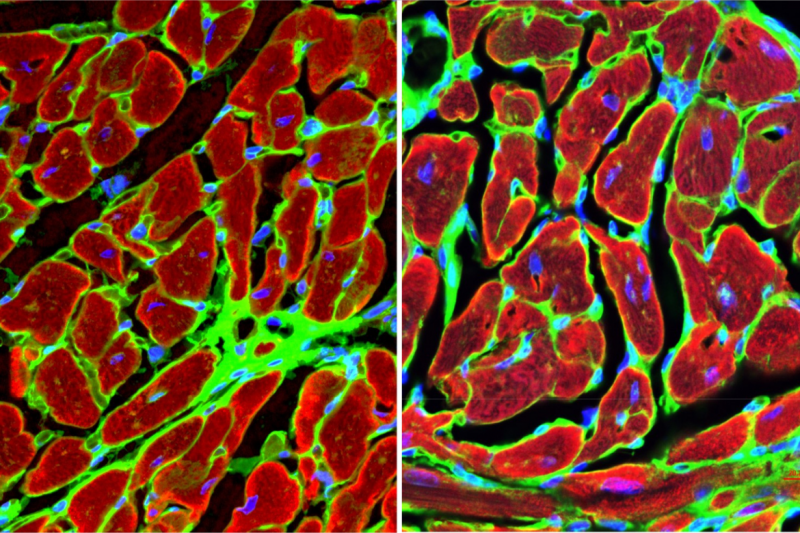Researchers Uncover Novel Role of Protein GPNMB in Heart Repair
Images

UCLA scientists have identified the protein GPNMB, or glycoprotein non-metastatic melanoma protein B, as a critical regulator in the heart’s healing process after a heart attack.
Using animal models, they demonstrate that bone marrow-derived immune cells called macrophages secrete GPNMB, which binds to the receptor GPR39, promoting heart repair. These findings offer a new understanding of how the heart heals itself and could lead to new treatments aimed at improving heart function and preventing the progression to heart failure.
Previous clinical studies have indicated that GPNMB has been strongly associated with cardiovascular outcomes of individuals with heart failure. What was not clear, however, was if lacking the protein was directly responsible for the development of heart failure after a heart attack. This important distinction — whether GPNMB is just an associated biomarker or one that plays a causal role — determines if the protein can be considered a therapeutic target for future studies.
Utilizing mouse models, the researchers first established that GPNMB is not natively expressed by the heart itself but is produced by inflammatory cells originating from the bone marrow. After a heart attack, these macrophages travel to the site of injury in the heart, where they express GPNMB.
The team conducted gene knockouts — inactivating the GPNMB gene — and bone marrow transplants and observed that mice lacking the GPNMB gene exhibited dramatically worse outcomes after a heart attack, including a higher incidence of heart rupture, a fatal complication also seen in human heart failure patients. Conversely, mice with normal GPNMB expression that were given an additional dose of circulating GPNMB protein showed improved heart function and reduced scarring. Four weeks after a simulated heart attack, 67% of the animals lacking the GPNMB gene exhibited severe fibrosis, or scarring, compared with only 8% of animals in the control group.
In addition to identifying GPNMB as a signaling molecule with effects across various cell types, the researchers uncovered that it binds to GPR39, previously considered an orphan receptor, or a receptor whose binding partner is not known. This interaction triggers a cascade of signals that promote tissue regeneration and limit scarring.
The new study demonstrates the potential of GPNMB as a therapeutic agent, as well as GPR39 as a target, that can limit scarring, improve cardiac function and prevent heart failure.
This research could also have broader implications for understanding tissue repair in other organs. As GPNMB is expressed in multiple tissues, future studies will explore its role in the repair of the brain, kidneys and other organs impacted by ischemic injury.